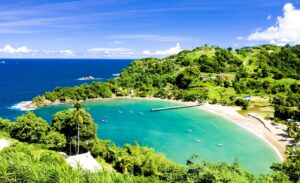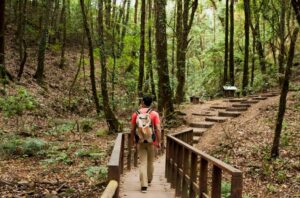Contents
- 1 Trinidad – A Hidden Gem for Birdwatching Enthusiasts
- 2 1: The Unique Avian Landscape of Trinidad
- 3 2: Principais locais para observação de aves em Trinidad
- 4 3: Birdwatching Tips for Beginners and Enthusiasts
- 5 4: The Role of Birdwatching in Trinidad’s Ecology and Tourism
- 6 5: Capturing the Moment – Photography Tips for Birdwatching
- 7 Conclusion: Embracing the Avian Wonders of Trinidad
- 8 “Download our complete e-book:
Trinidad – A Hidden Gem for Birdwatching Enthusiasts
Nestled in the southern Caribbean, the island of Trinidad stands as a testament to nature’s diversity and splendor. This tropical haven boasts an ecosystem as vibrant and varied as its cultural tapestry, making it a must-visit destination for nature lovers and birdwatching aficionados alike.
Trinidad’s lush landscapes, ranging from misty rainforests to mangrove swamps, create a unique environment that supports an astonishing variety of bird species. The island, often overshadowed by its more popular Caribbean neighbors, remains a relatively unexplored paradise for birdwatchers. Its rich avifauna includes both native species and migratory birds, making every visit a new adventure for those who tread its verdant paths.
What truly sets Trinidad apart is its impressive bird population. Home to over 460 bird species, the island represents one of the highest densities of bird species per square mile in the world. Among these are several rare and endemic species, such as the Trinidad Piping-Guan (Pawi), which is found nowhere else on Earth. The Asa Wright Nature Centre, renowned globally among birding circles, offers a glimpse into this avian wonderland, showcasing species like the dazzling Scarlet Ibis, Trinidad’s national bird, and the hummingbird, a symbol of delicate beauty and remarkable resilience.
This biodiversity is not just a boon for birdwatchers but also plays a crucial role in the island’s ecological balance. Each species, from the smallest hummingbird to the majestic birds of prey, contributes to the health and vitality of Trinidad’s ecosystem.
In essence, Trinidad is not just another island in the Caribbean; it’s a living, breathing aviary. A visit here offers more than just a glimpse into the world of birds; it’s an immersion into a natural ecosystem where avian life thrives unencumbered. For those ready to embark on this journey, Trinidad awaits with its wings wide open, ready to reveal its feathered secrets.
1: The Unique Avian Landscape of Trinidad
Trinidad, a gem in the Caribbean, is not just an island but a mosaic of varied landscapes, each contributing to its ecological richness and diversity. This geographical variety, ranging from the Northern Range’s steep, forested hills to the vast, seasonally flooded plains of the Nariva Swamp, creates an array of habitats that support an extraordinary variety of bird species.
The Northern Range, a continuation of the Andean mountain chain, is characterized by its lush, montane rainforests. These dense forests are a haven for bird species like the Blue-crowned Motmot and the Golden-headed Manakin, whose vibrant colors stand out against the verdant backdrop. The cooling mist and the canopy’s high humidity create an ideal environment for these birds, who thrive in the nutrient-rich ecosystem.
Moving towards the coast, the mangrove swamps of Caroni and Nariva present a starkly different landscape. These brackish water habitats are crucial for the survival of species such as the Scarlet Ibis, Trinidad’s national bird. These striking red birds, often seen in large flocks, paint a vivid picture against the evening sky as they return to roost in the mangroves. The swamps also support species like the elusive Mangrove Cuckoo and the vibrant Trinidad Euphonia.
In the southern plains, the open savannahs offer yet another habitat. Here, birds like the Red-breasted Blackbird and the Burrowing Owl are common sights. These open areas, with their unique grassland ecosystems, provide opportunities for different bird species to thrive, contributing to the island’s avian diversity.
Among the rare and exotic birds unique to Trinidad, the Trinidad Piping-Guan, or Pawi, is perhaps the most noteworthy. This critically endangered bird, found only in Trinidad, is a symbol of the island’s unique avian population. Another rare sight is the Oilbird, or Guácharo, which resides in the Cumaca caves. These nocturnal birds, with their eerie calls and unique echolocation abilities, add an element of mystique to Trinidad’s avian landscape.
Trinidad’s geographical and ecological diversity is not just a backdrop for these birds; it is a vital component of their survival and proliferation. The island’s unique topography and climate have created a haven where birds of all types – from the forest dwellers to the coastal inhabitants – can thrive. This diversity is a key reason why Trinidad is considered a premier destination for birdwatchers and nature enthusiasts from around the world.
2: Principais locais para observação de aves em Trinidad
Trinidad, com seus diversos ecossistemas, oferece uma infinidade de locais para observação de aves, cada um único em suas ofertas e experiências. Aqui estão alguns dos locais de visita obrigatória para qualquer entusiasta da observação de aves:
- Asa Wright Nature Centre
- Accessibility: Easily accessible by road, located in the Northern Range.
- Best Time to Visit: Year-round, but especially vibrant during the wet season (June to December).
- What to Expect: Over 150 species, including the Bearded Bellbird and the endemic Trinidad Motmot. This former cocoa-coffee-citrus plantation now serves as a conservation area. A local birdwatcher shared, “The veranda at Asa Wright is like a theater to nature’s symphony of birds. It’s simply magical.”
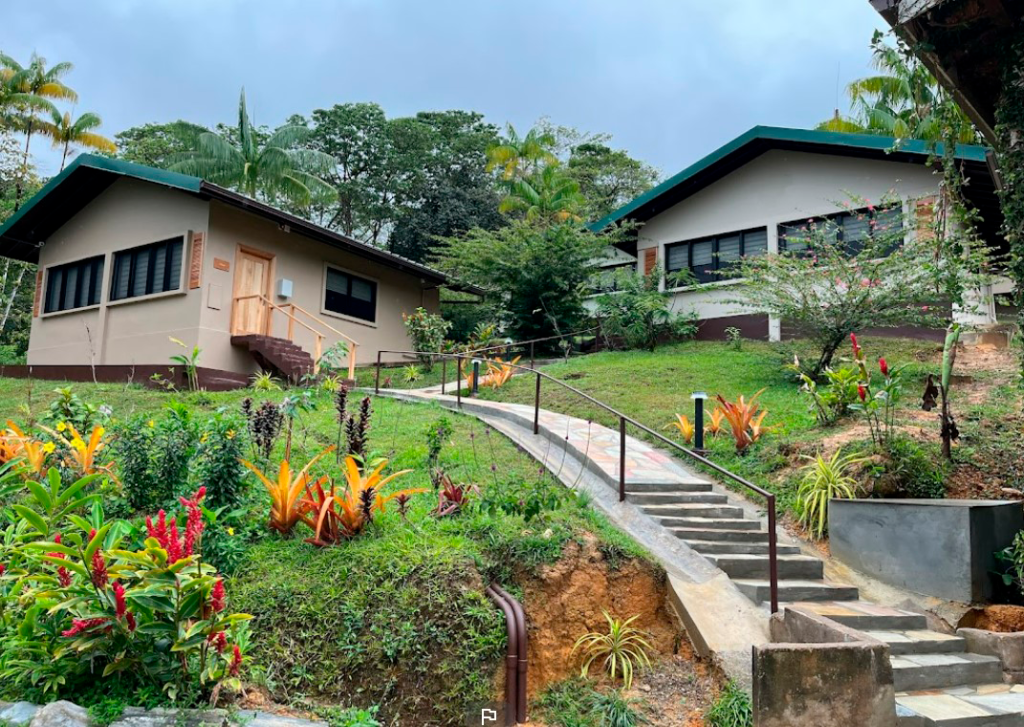
2 Caroni Bird Sanctuary
- Accessibility: Accessible by boat tours, located on the west coast.
- Best Time to Visit: Late afternoon for the Scarlet Ibis roosting spectacle.
- What to Expect: Mangrove forests teeming with bird life, including the national bird, the Scarlet Ibis, turning the mangroves red at dusk. A tour guide remarked, “No sunset at Caroni is ever the same, the dance of the Scarlet Ibis is Trinidad’s own natural ballet.”
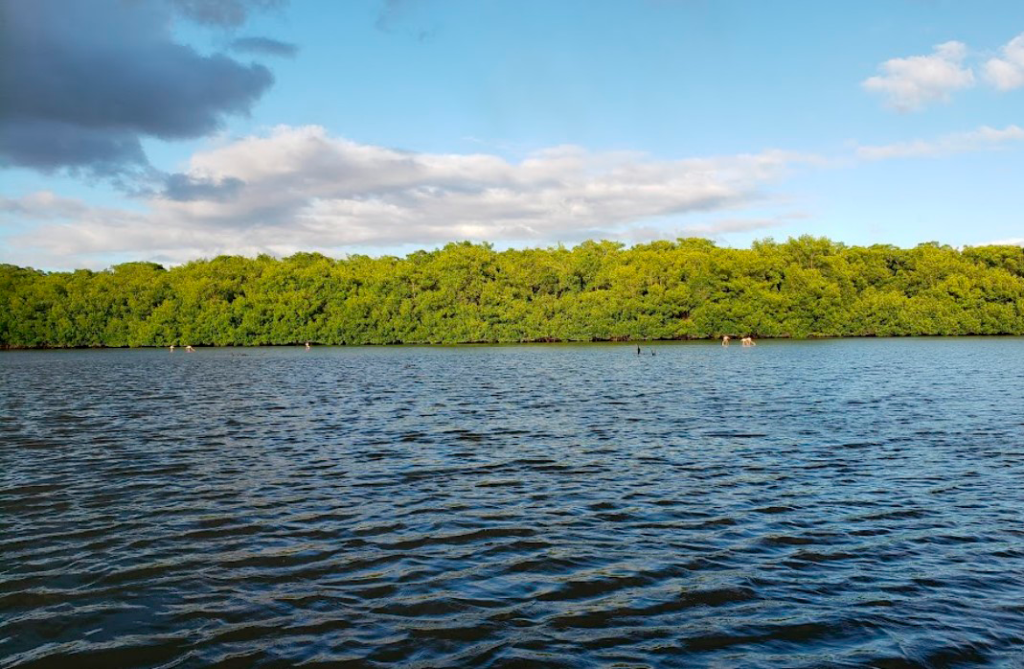
Caroni Bird Sanctuary- markanthonyr23- photo – mar. 2023
3 Nariva Swamp
- Accessibility: Best explored with a guided tour, located on the east coast.
- Best Time to Visit: Dry season (January to May) for easier access.
- What to Expect: A rich wetland ecosystem with species like the Red-bellied Macaw and the rare Blue-and-yellow Macaw. A birder noted, “Nariva’s biodiversity is unmatched; it’s a birdwatcher’s paradise in the truest sense.”
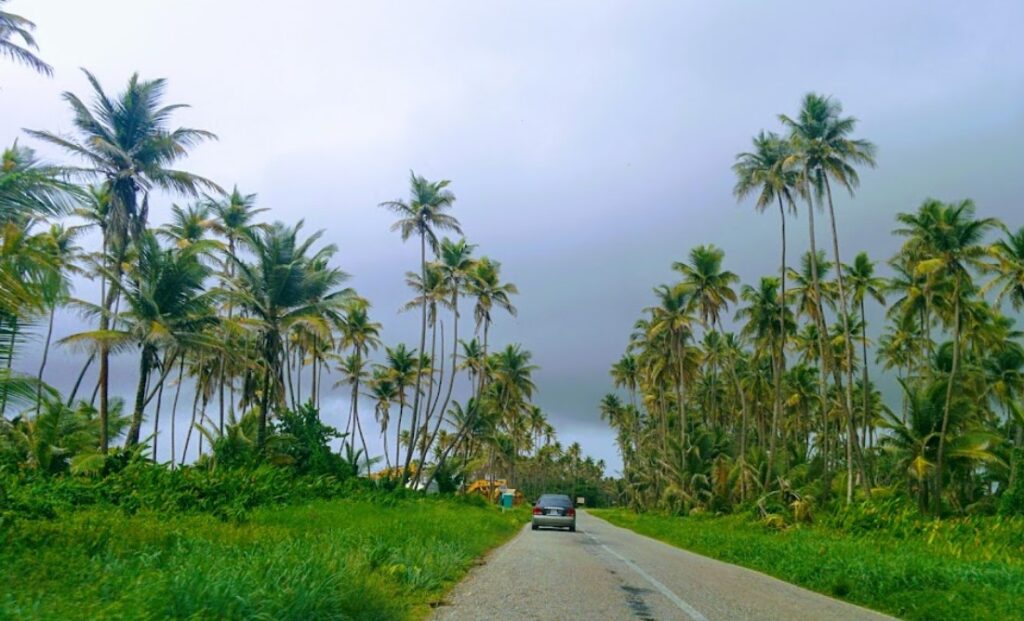
Nariva Swamp-Tavia Bandoo-set. 2018
4 Pointe-a-Pierre Wildfowl Trust
- Accessibility: Located near San Fernando, accessible by road.
- Best Time to Visit: Year-round.
- What to Expect: Lakeside trails and hides, perfect for spotting waterfowl and other species. An enthusiast shared, “Pointe-a-Pierre is a serene escape; the blend of education and conservation here is inspiring.”
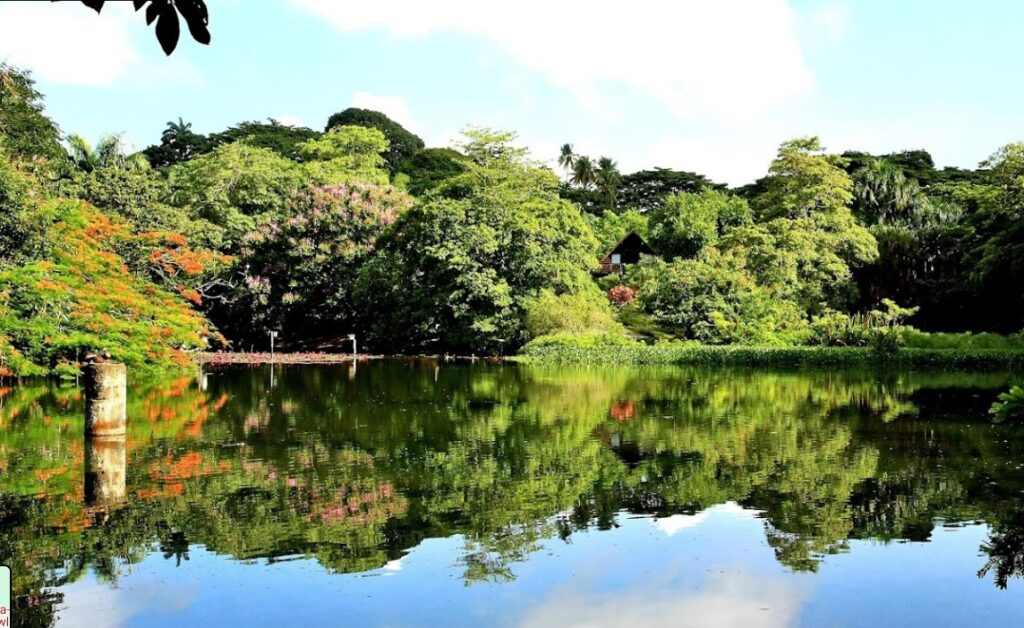
Pointe-a-Pierre Wildfowl Trust-jun. 2012
5 Cuffie River Nature Retreat
- Accessibility: Nestled in the rainforest of the Northern Range, accessible by road.
- Best Time to Visit: Year-round, especially for the chance to see the Rufous-tailed Jacamar.
- What to Expect: A secluded eco-lodge offering intimate birdwatching experiences. A guest recalled, “Waking up to the chorus of birds at Cuffie River is a melody that stays with you.”
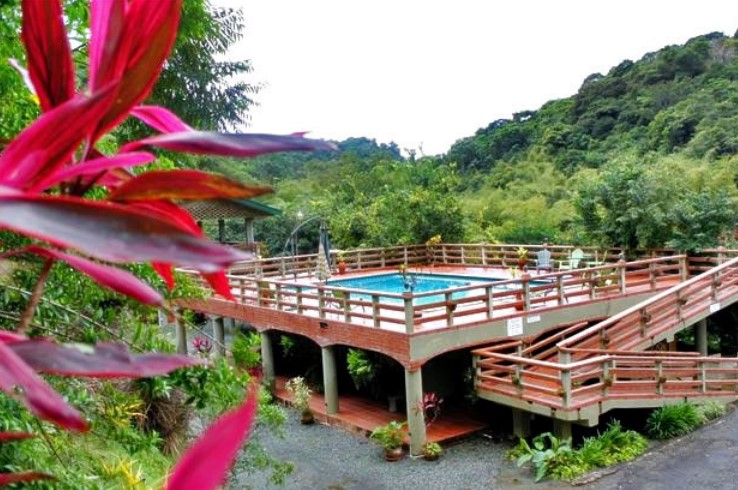
Cuffie River Nature Retreat-Tobago Luxury Hotels & Resorts-Foto-nov. 2014
6 Main Ridge Forest Reserve, Tobago
- Accessibility: Located in Tobago, accessible by road.
- Best Time to Visit: Year-round.
- What to Expect: The oldest protected rainforest in the Western Hemisphere, home to species like the White-tailed Sabrewing. A Tobago birder said, “Main Ridge is a testament to nature’s resilience and beauty.”
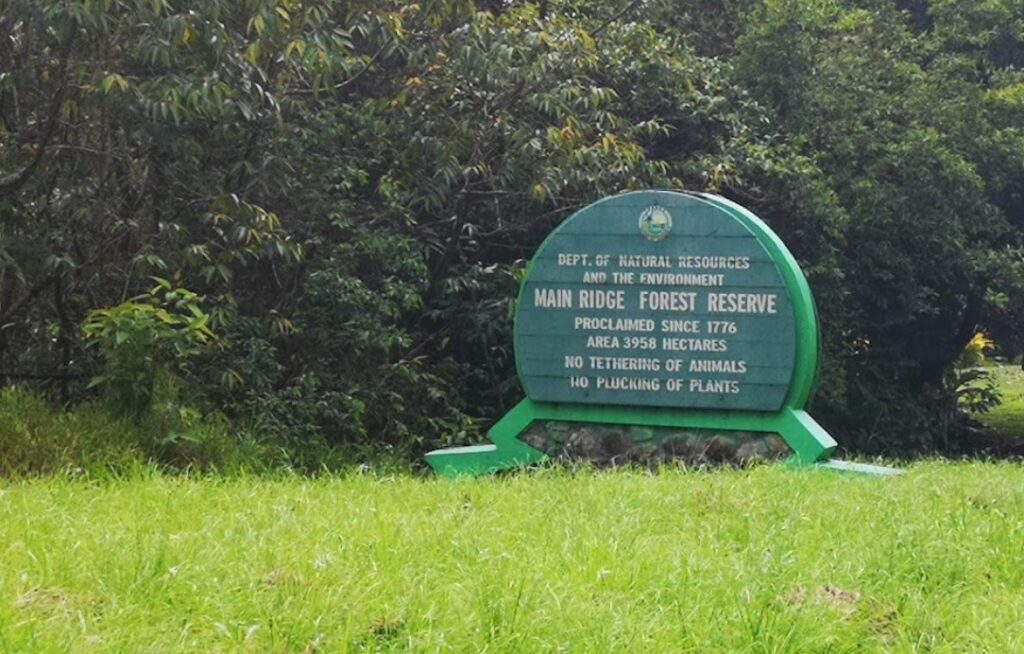
Tobago Main Ridge Forest Reserve-Kyla Kirk-Foto – abr. 2019
Each of these locations offers a unique glimpse into the avian life of Trinidad, showcasing the island’s dedication to preserving its natural heritage. Whether you’re a seasoned birder or a curious novice, these spots promise an unforgettable experience in the world of birdwatching.
3: Birdwatching Tips for Beginners and Enthusiasts
Birdwatching is a rewarding activity that connects us with nature and its wonders. Whether you’re a beginner or a seasoned enthusiast, following these tips can enhance your birdwatching experience while respecting the wildlife and their habitats.
Equipment Essentials
- Binoculars: A good pair of binoculars is crucial. Look for ones with a magnification of 8x or 10x. They should be lightweight and weather-resistant.
- Field Guide: Carry a field guide specific to Trinidad’s birds. This helps in quick identification and learning about species’ habits.
- Camera: For those interested in bird photography, a camera with a good zoom lens is essential. Remember, the goal is to capture images without disturbing the birds.
- Notebook and Pen: Documenting sightings can be a gratifying part of birdwatching. Note the date, time, location, and bird behavior.
- Appropriate Clothing: Wear comfortable, weather-appropriate clothing. Camouflage or earth-toned clothing helps in blending with the environment.
Best Practices and Etiquette
- Start Early or Late: Birds are most active during the early morning and late afternoon. Plan your birdwatching accordingly.
- Move Slowly and Quietly: Sudden movements or loud noises can startle birds. Be as inconspicuous as possible.
- Use Your Ears: Often, you’ll hear a bird before you see it. Learning bird calls and songs can greatly enhance your birdwatching experience.
- Keep a Safe Distance: Always maintain a respectful distance from birds and their nests. Binoculars and cameras with zoom lenses are key in observing birds without disturbing them.
Respecting Wildlife and Natural Habitats
- Do Not Feed the Birds: Feeding birds can disrupt their natural foraging habits and diet.
- Stay on Trails: Straying off paths can lead to habitat destruction and can disturb nesting birds.
- Leave No Trace: Take all your litter with you. Even small items like bottle caps can be harmful to birds.
- Respect Local Regulations and Guidelines: Follow the rules set by nature reserves or parks. These are in place to protect wildlife and their environment.
- Educate Others: Share your knowledge and respect for birdwatching etiquette with fellow enthusiasts, especially those who are new to the hobby.
Remember, the essence of birdwatching lies in the appreciation and preservation of nature. By following these tips, you can enjoy the beauty of avian life while ensuring that these spectacular creatures thrive in their natural habitats for generations to come.
Parte superior do formulário
4: The Role of Birdwatching in Trinidad’s Ecology and Tourism
Birdwatching in Trinidad goes beyond being a leisure activity; it plays a significant role in both ecological conservation and the enhancement of local tourism. This dual impact not only benefits the environment but also contributes to the socio-economic wellbeing of the island.
Environmental Awareness and Conservation Efforts
- Promoting Biodiversity: Birdwatchers, through their observations and records, contribute to understanding the island’s avian diversity. This information is crucial for conservationists in monitoring bird populations and their habitats.
- Citizen Science Contributions: Many birdwatchers participate in citizen science projects, providing valuable data that help in tracking migratory patterns, breeding habits, and the effects of climate change on bird species.
- Supporting Protected Areas: Birdwatching tourism increases the value of protected areas, offering an economic incentive to preserve these habitats. It fosters an understanding among locals and visitors alike about the importance of conserving Trinidad’s unique ecosystems.
- Education and Engagement: Birdwatching activities often include educational components, helping people of all ages appreciate the importance of ecological balance and the role birds play in it. This awareness leads to greater community engagement in conservation efforts.
Impact on Local Tourism and Economy
- Boosting Eco-Tourism: Birdwatching is a key component of Trinidad’s eco-tourism sector. The island’s rich birdlife attracts enthusiasts from around the globe, providing a sustainable form of tourism that respects and preserves natural environments.
- Economic Opportunities for Locals: The popularity of birdwatching creates job opportunities in various sectors, including tour guiding, hospitality, and transportation. Locals who understand the terrain and bird habitats become invaluable resources for visitors.
- Global Recognition: Internationally recognized birdwatching spots like the Asa Wright Nature Centre elevate Trinidad’s profile on the global stage. This recognition not only boosts tourism but also brings attention to the island’s conservation efforts.
- Community Development: Revenue generated from birdwatching tourism often goes back into the community, funding local projects, and improving infrastructure, which benefits both residents and tourists.
- Cultural Exchange: Birdwatching brings together people from diverse backgrounds, fostering cultural exchange and understanding. This enhances the overall tourism experience, promoting Trinidad as a culturally rich and welcoming destination.
In conclusion, birdwatching in Trinidad is more than just a pastime; it is a critical activity that supports ecological preservation and provides a sustainable pathway for economic development through tourism. By nurturing this sector, Trinidad not only protects its natural heritage but also showcases its beauty and biodiversity to the world.
5: Capturing the Moment – Photography Tips for Birdwatching
Photographing birds in their natural habitat can be both challenging and immensely rewarding. Whether you are an amateur or a professional, these tips and techniques can help you capture stunning images of Trinidad’s diverse avian life.
Equipment Essentials
- Camera: A DSLR or a mirrorless camera is ideal for bird photography. These cameras offer the ability to change lenses and adjust settings for different situations.
- Lenses: A telephoto lens (300mm or longer) is essential for bird photography. It allows you to capture detailed shots from a distance without disturbing the birds.
- Tripod or Monopod: These provide stability, especially with long lenses. They are crucial for sharp images, especially in low light conditions.
- Binoculars: These are helpful for spotting birds before trying to photograph them.
Techniques for Successful Bird Photography
- Understanding Bird Behavior: Learn about the birds you are photographing. Knowing their habits can help you anticipate their movements and get better shots.
- Patience and Persistence: Birds are unpredictable. Patience is key. Be prepared to wait for the right moment.
- Use Natural Light: Early morning or late afternoon light is ideal for bird photography. The soft light enhances colors and minimizes shadows.
- Focus on the Eyes: Sharp, clear eyes are crucial in bird photography. Ensure the bird’s eyes are in focus for a captivating image.
- Composition: Follow the rule of thirds for a pleasing composition. Give the bird space to ‘move’ into the frame.
- Shutter Speed: Use a fast shutter speed to freeze motion, especially for birds in flight or quick movements. A rule of thumb is to use a shutter speed at least as fast as the reciprocal of your lens’ focal length.
Tips for Amateurs and Professionals
- For Amateurs: Start with common, less skittish birds to practice. Experiment with camera settings in different lighting conditions. Post-processing can enhance your photos, but don’t rely solely on it.
- For Professionals: Experiment with different perspectives and compositions. Use manual settings for greater control over exposure and depth of field. Consider the background and how it interacts with the subject for more artistic shots.
Respecting the Birds
- Always prioritize the welfare of the birds. Keep a respectful distance and avoid causing any disturbance to their natural behaviors and habitats.
Capturing birds in their natural habitat in Trinidad offers a unique opportunity to showcase the beauty and diversity of avian life. With the right equipment, techniques, and a respectful approach, both amateur and professional photographers can produce stunning images that celebrate these remarkable creatures.
Conclusion: Embracing the Avian Wonders of Trinidad
Trinidad, a vibrant jewel in the Caribbean, offers an unparalleled birdwatching experience. Its unique geographical location and diverse habitats create a haven for an extraordinary variety of birds, making it a paradise for birdwatchers and nature enthusiasts alike. From the lush, misty rainforests of the Northern Range to the serene mangroves of Caroni, each corner of the island tells its own story, rich with the sights and sounds of its avian inhabitants.
As we have explored, birdwatching in Trinidad is not just about the thrill of spotting rare and exotic birds; it is a journey into the heart of nature. It’s an opportunity to connect with the environment in a meaningful way, to appreciate the delicate balance of ecosystems, and to understand the critical role birds play in maintaining this balance.
The island’s birdwatching spots, each with its own unique charm, invite enthusiasts to immerse themselves in the beauty of the natural world. The Asa Wright Nature Centre, the Caroni Bird Sanctuary, and the Nariva Swamp are just a few of the locations where one can witness the spectacular diversity of Trinidad’s bird life. Whether you are a beginner or a seasoned birder, the island’s avian landscape offers endless opportunities for discovery and awe.
For those inclined towards capturing these moments, bird photography in Trinidad presents a canvas like no other. The tips and techniques shared not only aim to enhance the photographic experience but also emphasize the importance of respecting the natural habitats of these winged wonders.
As we conclude this exploration of Trinidad’s birdwatching paradise, it’s a call to all – to experience, to cherish, and to protect. We encourage you to visit and explore the natural beauty of Trinidad, to tread lightly and respectfully, and to become a part of the island’s ongoing story of conservation and appreciation for nature’s gifts.
Trinidad awaits, not just as a destination, but as an experience, a memory, and a treasure trove of natural wonders. Come, be a part of this avian paradise, and let the beauty of the island’s birds captivate your heart and imagination.Parte superior do formulário
“Download our complete e-book:
‘Trinidad Unveiled: A Traveler’s Ultimate Guide to the Island’s Hidden Gems’ It’s a comprehensive guide for exploring Trinidad. Written by Aiden Ramnarine, a Trinidad native, the book highlights the island’s cultural, natural, and culinary riches. Readers are guided through must-see sites, local festivities, outdoor adventures, and practical information for travelers, complete with personalized itineraries and tips for responsible and sustainable travel.


